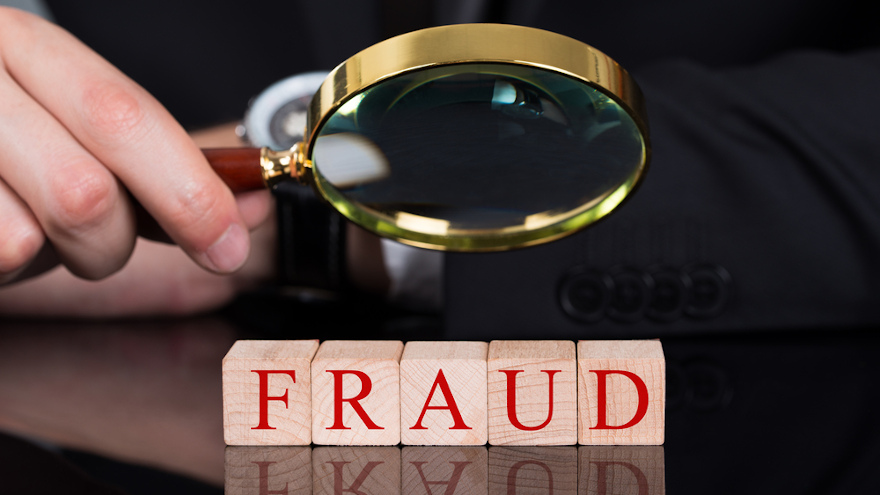Socure details depth of first-party fraud

By subscribing, you agree to receive communications from Auto Remarketing and our partners in accordance with our Privacy Policy. We may share your information with select partners and sponsors who may contact you about their products and services. You may unsubscribe at any time.
Dealerships and finance companies likely are quite aware of fraud committed by organized individuals and rings of experts who steal credit information to create synthetic IDs.
But new research from Socure highlighted the depth of first-party fraud being done by individuals nowadays; perhaps consumers who are still trying to secure auto financing.
The provider of digital identity verification and fraud solutions said its research showed first-party fraud costs U.S. financial institutions and merchants more than $100 billion a year.
Moreover, Socure reported more than one in three Americans (35%) admit to committing first-party fraud themselves, in which people use their own identity to commit a dishonest act for financial gain.
“The results underscore that, with minimal stigma or personal consequences, first-party fraud has concerningly established itself as a widely accepted everyday activity,” Socure said in a news release about its first-party fraud study that combines two significant pieces of research — a survey of 1,000 U.S. consumers and deep insights gleaned from hundreds of millions of financial transactions.
“This was done to expose the elusive, widespread nature of this massive problem and the behaviors and motivations of those behind it,” Socure said.
Subscribe to Auto Remarketing to stay informed and stay ahead.
By subscribing, you agree to receive communications from Auto Remarketing and our partners in accordance with our Privacy Policy. We may share your information with select partners and sponsors who may contact you about their products and services. You may unsubscribe at any time.
According to Socure’s survey data, two in five Americans (40%) said that they know someone who has engaged in some type of first-party fraud. This includes requesting a refund on an online purchase by falsely claiming that a delivery has been lost, choosing not to pay off credit card bills indefinitely, making a purchase through a “Buy Now Pay Later” (BNPL) loan or maxing out a credit card with no intention of paying it off, or disputing a legitimate financial transaction.
What’s more, a large majority (77%) believe that there are some instances where first-party fraud should not carry any legal consequences.
“America has an enormous first-party fraud problem that we’ve swept under the rug for too long. Countless consumers take advantage of a system with little to no consequences, despite causing billions in losses,” said Mike Cook, vice president, fraud product and investigations at Socure. “While many may feel that first-party fraud is a victimless crime, this blossoming culture of unalloyed theft is driving higher costs for every single consumer.
“To combat this, it’s time for our industry to share intelligence, create a widely accepted definition that focuses on these fraudulent behaviors, and push for regulatory changes that will close loopholes for those carrying out these all-too-common acts,” Cook continued.
Socure indicated falling on hard times is the most common rationalization for engaging in first-party fraud, as 34% of those that admitted to the practice cited economic hardship as their reason.
Additional excuses highlighted in the research were that it was an accident (29%) and that they knew someone else who had successfully committed the act with no repercussions, which drove them to commit first-party fraud themselves (19%).
Socure discovered younger Americans are far more likely to engage in first-party fraud.
According to the research, a majority of Gen Z (52%) say they’d commit first-party fraud if they knew there would be no negative consequences, and 1 in 5 (19%) do not consider it to be ethically wrong – a rate three times higher than Baby Boomers (6%).
Nearly a third of all Gen Z (roughly 30%) admit to making a purchase through a BNPL loan without intending to pay it back — the most common behavior amongst this age group.
Socure has also analyzed hundreds of millions of financial transactions beyond the standard credit report to understand the behavior of first-party fraudsters, discovering several tell-tale signs:
—Fraudsters often use newly created identity contact elements such as email, address, and phone numbers to create new accounts (oftentimes during the same week), most likely in an effort to avoid follow-on collection attempts.
—Consumers who have two or more closed accounts associated with first-party fraud are 189 times more likely to commit fraud again.
—The more users are on an account, the more likely first-party fraud is to occur. For instance, accounts with five or more registered authorized users are 22 times more likely to be linked to first-party fraud.
—An account closed within 90 days from opening is three times more likely to have committed first-party fraud.
“Despite these increasingly clear indicators, much more needs to be done to effectively fight back,” Socure said.
According to an additional recent poll conducted by Socure, nearly 50% of financial institutions do not go back to the consumer to collect funds, even if it’s determined that it is first-party fraud.
“Instead, they opt to ‘just take a loss,’ leaving little incentive for fraudsters to stop what they’re doing,” Socure, which mentioned that its full report titled, Defining and Solving the Elusive Challenge of First-Party Fraud, is available via this website.


